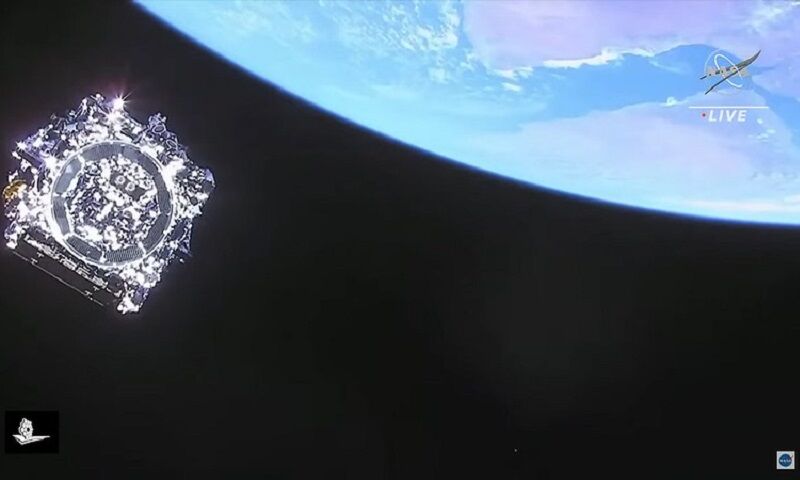Published on March 28, 2022
The James Webb Space Telescope: Empowering Science Through Partnerships
An interview with Thomas Zurbuchen

How will the James Webb Space Telescope revolutionize space observation, and how will it help the scientific community understand the origin and evolution of the universe?
NASA’s James Webb Space Telescope is the most audacious space telescope ever conceived – a technological marvel capable of studying every phase in the history of our universe through its infrared cameras and spectroscopy. Webb promises to show us the first luminous glows after the big bang, but it will also look closer to home at the evolution of our own solar system. And Webb will take our search for potentially habitable exoplanets a critical step further, searching the atmospheres of other worlds for the fingerprints of molecules that indicate they could possibly support life. Thousands of astronomers worldwide will use Webb’s capabilities to enhance our collective understanding of the universe, and our place in it.
Who is behind Webb?
Webb is the largest international space science project in U.S. history. I am so proud of the diverse team of thousands who have worked on this mission over the course of its development – across government, industrial, academic, and international partners, including NASA’s partners the European Space Agency and the Canadian Space Agency. For me, Webb serves as a true testament to successful, long-lasting partnerships worldwide.
What is next now for the telescope? Why will it take six months to see Webb’s first images? Since its launch in December, Webb has seen a series of incredible and unprecedented successes – from unfolding in space, including the deployment of its massive sunshield, to arriving at its destination nearly a million miles from Earth, to confirming that its optical performance will meet or even exceed our expectations. But preparing the telescope for science observations is a long and complex process. We are currently in the process of aligning Webb’s mirrors to its instruments, cooling the telescope and its instruments to their extremely cold operating temperatures, and then preparing the instruments for science operations. This whole process takes about six months after launch, before the world will see Webb’s first stunning science images.
How far back in time can Webb see?
One of Webb’s main goals – the reason this incredible telescope was conceived – is to look back in time to find the first galaxies that ever formed in the universe. To do this, Webb will be able to see back to when the universe was only one or two percent of its current age – about 100 to 250 million years after the big bang. The light from these first galaxies has traveled to us for about 13.6 billion years.
What kind of instruments and mirrors does Webb have? How does Webb compare to the Hubble Space Telescope?
Webb has four science instruments on board, providing us with an incredible array of tools with which to observe the universe. These instruments offer longer wavelength coverage than Hubble, from near- to mid-infrared wavelengths, with incredible sensitivity to capture spectacular new images and spectra of the cosmos starting this summer. Webb also has the largest mirror ever put into space, a 6.5-meter primary mirror about six times larger in area than Hubble’s, made of up 18 individual, hexagonal segments. These segments are coated in gold to optimize them to reflect the long wavelengths of infrared light. Webb is the scientific successor to Hubble, and the two telescopes will conduct exciting, complementary science, although Webb will do so from outside of Earth’s orbit, about a million miles away.
The construction of Webb pushed the limits of human engineering. What are the next space missions to look forward to now that Webb has successfully launched?
In Astrophysics, development of NASA’s Nancy Grace Roman Space Telescope is well underway – this next flagship mission will provide the same crisp resolution as Hubble, but over a field of view 100 times larger. Its sweeping cosmic surveys will complement the detailed studies of missions like Webb. But much sooner than that, there is so much NASA science to look forward to in 2022 alone. Bringing together multiple spacecraft in an entirely new fashion, the Earth System Observatory partnership between NASA and commercial and international entities will revolutionize Earth Science; we’ll seek to go forward to the Moon with commercial providers; the Double Asteroid Redirection Test will intentionally crash into an asteroid to test a technique that could be used to deflect harmful asteroids away from Earth in the future, should one ever be discovered; and we’ll observe the Sun up close as NASA’s Parker Solar Probe completes its fourteenth perihelion – the location in the elliptical orbit closest to the Sun. Webb’s successful deployments and initial optical performance have given us an incredibly positive start to 2022, and I remain so excited for all the coming year holds.
Don't miss THE JAMES WEBB SPACE TELESCOPE panel at the IAF Spring Meetings 2022 on Tuesday 29 March 2022 at 17h30 - 18h30 CEST in Seine Room, New CAP Conference Centre
